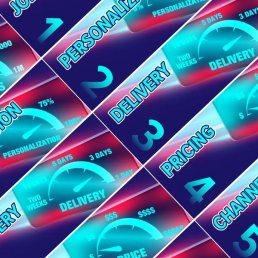Are Your PDFs Being Optimized to Secure Significant Savings?

PDF optimization (or lack of it) impacts your printing environment’s costs and savings. We continue to see print and digital production processes move to the PDF file format as a standard. As experts in PDF, we believe there are significant cost savings to be unlocked based on how you handle PDFs; savings that have yet to be achieved by many Print Service Providers (PSPs) in their printing environments and archives.
We know that PDF has won the standards race. It is a flexible format; one that is widely in use around the globe for both print and digital applications. It is safe to say that you interact with PDF files in both business and personal activities regularly. We would venture to say that you touch a PDF file at least several times a month, which makes sense when you consider the stats we discussed during the 2020 PDF Association OctoberPDFest virtual event:
At the 2016 PDF Europe Conference, PDF had this impact on the world:
- 2.2 billion PDF files on the (public) web (Google)
- 20 billion PDF files in Dropbox
- Airbus, Boeing and the US Dept. of Justice each have over 1 billion PDFs
- 2 billion PDFs opened every year in Outlook.com
- 73 million new PDF files saved every day in Google Drive & Mail
- 60% of non-image attachments are PDFs in Outlook Exchange Enterprise
Adobe updated this impact in 2020:
- An estimated 2.5 trillion PDF documents in the world
- 250+ billion PDFs were opened in Adobe products in the last year
No matter how you view those numbers, that is a lot of PDF in the world—and it is growing. The sheer volume of PDF in use for both print and digital purposes should give every Print Service Provider (PSP) using PDF in their day-to-day processes reason to investigate their PDF optimization.
Is your PDF optimization on point? It takes more than preflighting to optimize, so the sophistication of your PDF optimization matters to maximize time and cost savings in your printing environment. Many of our Customer Advisory Council members asked us to help them solve problems associated with processing PDF files containing variable data for their production print and e-delivery service offerings.
Their observations led us to develop ReadyPDF® Prepress Server™—a superior PDF optimization tool recently recognized by Keypoint Intelligence and Buyers Lab as an award-winning innovation. Our solution, part of our Chemistry™ Platform of modular print and digital workflow solutions, was designed to meet that demand for more powerful capabilities, which you can learn about in our quick ReadyPDF Evolved video.
The key to the ReadyPDF server PDF optimization success is its large set of standard features and functions providing an opportunity for time savings and file size reductions. Consider what one of our current customers had to say about how ReadyPDF server has positively impacted their printing environment when other tools on the market could not:
“This particular job was e-delivery for a number of iterations, both internal and third-party. We host and archive 100% of the output and print the content on a color roll press. Pre-ReadyPDF, this application would have a 24-hour turnaround. Using ReadyPDF it takes just 1 hour – the savings are quite incredible!”
“Typically, we saw a 650MB file reduced to just 50MB. Although the ReadyPDF files were smaller, they also contained more content, ensuring there was zero impact on the downstream systems. ReadyPDF also enabled a more streamlined approach, eliminating the need for multiple resources as all files, whether archived or printed, are optimized for print production.”
You may have the same opportunity to optimize your print and digital production. Think about the excessive time lost processing or transferring large and poorly constructed PDF files. Consider the number of times they move from process to process in your workflow. The bigger and messier the file is under the covers (down in the code), the more time it takes to move it between processes.
Now also consider that poorly constructed and unoptimized PDF files can take significantly more time for software and Digital Front Ends (DFEs) on printers to process. They also bloat the storage requirements for your nearline servers and digital archives. Large files will also cost more to keep as we discuss in our storage cost blog. But there is a remedy.
ReadyPDF Prepress Server helps reduce time and costs in your printing environment and digital communications, storage and retrieval ecosystem. We invite you to explore the possibilities. To learn more about PDF optimization, here’s a short video on ReadyPDF Prepress Server. We also welcome you to reach out to our expert team for more information.
Author

Jonathan Malone-McGrew
Senior Director, Engagement – Solimar Systems
jmm@solimarsystems.com
linkedin.com/in/jemcgrew
About the Author
With family roots in the print and digital communications space, Jonathan brings an understanding of client and partner environments, technologies and the resulting challenges. Responsible for partner and client engagement, he is always willing to lend his expertise.
For more information, call the Solimar Sales Team at +1.619.849.2800.




